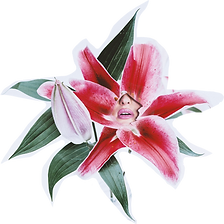Building Vibrant Art Communities
- Santa Barbara Art

- 3 days ago
- 4 min read
Creating vibrant artistic communities is essential for nurturing creativity, fostering collaboration, and enriching cultural life. These communities provide a platform where artists, enthusiasts, and supporters come together to share ideas, showcase work, and inspire one another. Building such communities requires intentional effort, strategic planning, and a welcoming environment that encourages participation from diverse voices.
The Importance of Artistic Communities
Artistic communities serve as the backbone of cultural development. They offer artists a sense of belonging and a network of support that can be crucial for personal and professional growth. These communities also help preserve local culture and traditions while encouraging innovation and experimentation.
A strong artistic community can:
Promote collaboration among artists from different disciplines.
Provide educational opportunities through workshops and mentorship.
Increase visibility for emerging artists.
Enhance local economies by attracting tourism and creative businesses.
Create social impact by engaging diverse audiences and addressing community issues through art.
For example, cities with thriving artistic communities often see a boost in cultural tourism and local pride. Events like gallery openings, art walks, and public installations become regular fixtures that draw people together.

How to Foster Artistic Communities
Building an artistic community starts with creating spaces and opportunities where artists and art lovers can connect. Here are some practical steps to foster these communities:
1. Establish Physical and Virtual Spaces
Physical spaces such as studios, galleries, and community centers provide places for artists to work, exhibit, and meet.
Virtual platforms like social media groups, forums, and websites allow for broader engagement beyond geographical limits.
2. Organize Regular Events
Host art fairs, exhibitions, and open studios to showcase local talent.
Arrange workshops and classes to develop skills and encourage learning.
Plan networking events to connect artists with collectors, curators, and patrons.
3. Encourage Inclusivity and Diversity
Ensure that the community welcomes artists of all backgrounds, ages, and skill levels.
Promote projects that reflect diverse perspectives and experiences.
Provide accessible venues and resources to remove barriers to participation.
4. Collaborate with Local Institutions
Partner with schools, libraries, and cultural organizations to expand reach.
Seek support from local government and businesses for funding and promotion.
Engage with media outlets to highlight community activities.
5. Support Emerging Artists
Create mentorship programs pairing experienced artists with newcomers.
Offer grants, residencies, or exhibition opportunities to help artists grow.
Provide platforms for feedback and constructive critique.
By implementing these strategies, communities can build a strong foundation that nurtures creativity and connection.
The Role of Technology in Artistic Communities
Technology has transformed how artistic communities form and operate. Online tools enable artists to share their work, collaborate remotely, and reach global audiences. Here are some ways technology supports artistic communities:
Social media platforms like Instagram and TikTok allow artists to showcase their portfolios and engage with followers.
Online marketplaces provide venues for selling art directly to buyers.
Virtual galleries and exhibitions make art accessible to people who cannot attend in person.
Collaboration tools such as video conferencing and cloud storage facilitate joint projects.
Crowdfunding platforms help artists raise funds for creative endeavors.
However, it is important to balance digital engagement with in-person interactions to maintain the sense of community and personal connection.

Building Sustainable Artistic Communities
Sustainability is key to the long-term success of artistic communities. This means creating systems that support ongoing growth, resilience, and adaptability. Consider these approaches:
Develop leadership and governance structures that include diverse voices and shared responsibilities.
Create financial models that combine public funding, private sponsorship, and community fundraising.
Invest in education and outreach to cultivate new generations of artists and supporters.
Encourage environmental responsibility in art production and community events.
Monitor and evaluate community activities to learn and improve continuously.
Sustainable communities are better equipped to weather challenges and continue providing value to their members and the wider public.
Inspiring Examples of Artistic Communities
Around the world, many artistic communities serve as models of vibrancy and impact. For instance:
The Santa Barbara art community in California is known for its collaborative spirit and diverse programming. It offers numerous galleries, workshops, and public art projects that engage residents and visitors alike. You can explore more about this thriving art community to see how it fosters creativity and connection.
The Montmartre neighborhood in Paris has a rich history of artists living and working together, creating a unique cultural atmosphere that continues to attract creatives.
The Wynwood Arts District in Miami transformed a warehouse area into a colorful hub of street art, galleries, and events, revitalizing the neighborhood and boosting local pride.
These examples demonstrate how artistic communities can shape the identity and vitality of a place.
Nurturing Creativity Through Community Engagement
At the heart of every vibrant artistic community is active engagement. Encouraging participation from all members helps sustain enthusiasm and innovation. Here are some ways to nurture creativity:
Host collaborative projects such as murals, performances, or festivals that involve multiple artists and community members.
Create feedback loops where artists and audiences can share thoughts and ideas openly.
Celebrate achievements through awards, publications, and public recognition.
Encourage experimentation by providing safe spaces for risk-taking and new approaches.
Promote cross-disciplinary work to blend different art forms and perspectives.
By fostering a culture of openness and support, communities can unlock the full potential of their creative members.
Building vibrant artistic communities is a rewarding endeavor that enriches lives and strengthens cultural fabric. Through intentional efforts to create inclusive spaces, leverage technology, and sustain growth, these communities can thrive and inspire for generations to come. Whether you are an artist, organizer, or supporter, your involvement helps shape a dynamic environment where creativity flourishes.











Comments